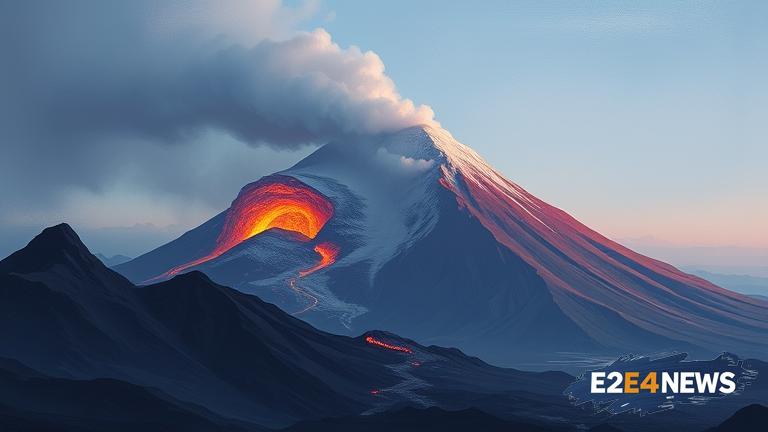A volcano in Alaska, which has been dormant for over 100 years, is now exhibiting signs of increased activity, sparking concern among scientists and volcanologists. The volcano, located in the remote wilderness of Alaska, had been silent for so long that many had considered it to be extinct. However, recent data suggests that the volcano is stirring, with increased seismicity and gas emissions detected in the area. The United States Geological Survey (USGS) has been monitoring the volcano’s activity closely, using a range of techniques including seismic monitoring, gas sampling, and satellite imagery. According to the USGS, the volcano’s awakening is likely due to the movement of magma beneath the surface, which is causing the increased seismicity and gas emissions. The volcano’s activity is still considered to be at a low level, but scientists are warning that it could potentially erupt in the future. The volcano’s location in a remote area of Alaska means that it does not pose an immediate threat to human populations, but it could still have significant impacts on the environment and local ecosystems. The USGS is working closely with other agencies, including the Federal Aviation Administration (FAA) and the National Weather Service (NWS), to monitor the volcano’s activity and provide warnings in the event of an eruption. The volcano’s awakening is also of interest to scientists, who are keen to study its activity and learn more about the underlying processes that drive volcanic eruptions. The volcano is one of many in Alaska, which is home to more than 50 active and dormant volcanoes. The state’s unique geology, with its location on the Pacific Ring of Fire, makes it a hotspot for volcanic activity. The USGS is responsible for monitoring volcanic activity across the United States, and works closely with international partners to share data and expertise. The agency’s work includes monitoring seismicity, gas emissions, and other signs of volcanic activity, as well as providing warnings and alerts in the event of an eruption. In addition to its work on volcanic activity, the USGS also conducts research on the environmental and economic impacts of volcanic eruptions. The agency’s scientists are working to improve our understanding of volcanic eruptions, and to develop new technologies and techniques for monitoring and predicting volcanic activity. The study of volcanic eruptions is a complex and multidisciplinary field, requiring expertise in geology, geophysics, and other sciences. By studying the Alaska volcano and others like it, scientists hope to gain a better understanding of the underlying processes that drive volcanic activity, and to improve our ability to predict and prepare for future eruptions.
